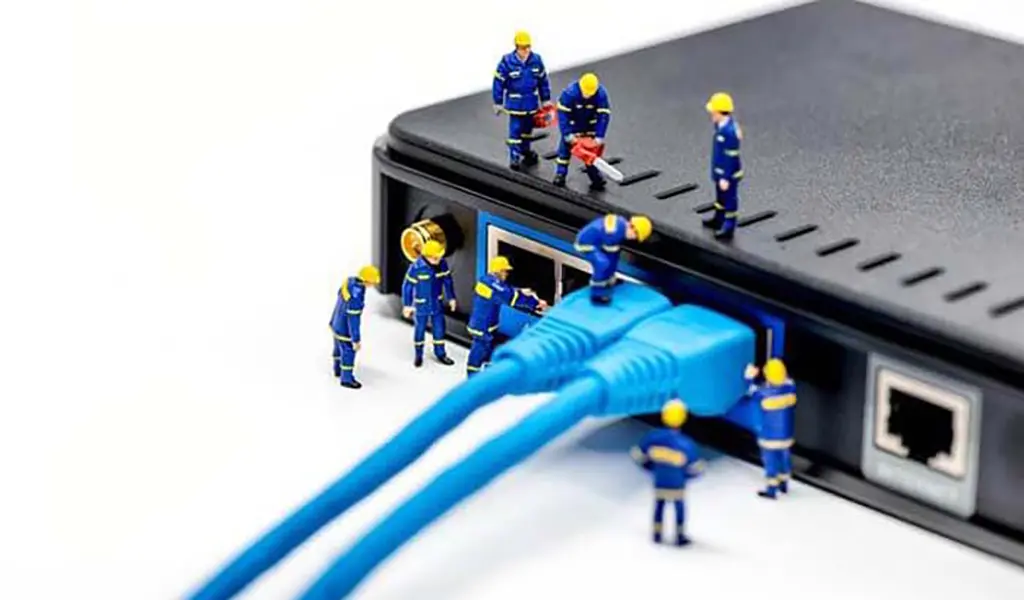
In today's interconnected world, the pace of internet connectivity plays a vital role in shaping our daily routines, from enabling communication and access to information to driving economic development and innovation.
Table of Contents
- 1 The Need for Speed
- 2 Global Trends in Internet Speeds
- 3 Which Countries Have the Fastest Internet Speeds?
- 4 Countries with the Slowest Internet Connectivity
- 5 The Superpower Speeds
- 6 Internet speeds in the UK
- 7 Efforts to Improve Internet Speed Globally
- 8 The Future of Internet Speeds: Trends and Predictions
The Need for Speed
In today's highly connected world, having fast and reliable internet speed is more critical than ever. It is the backbone of our daily routines, enabling us to communicate, access information, and drive economic growth. A stable and speedy internet connection is essential for ensuring seamless online experiences, whether it's streaming videos, conducting online business transactions, or interacting with smartphones on social media. Internet speed has a significant impact on various aspects of our lives, including productivity, entertainment, and healthcare. Faster internet speeds enhance user experiences, enabling high-definition video streaming and efficient video conferencing. Furthermore, in an increasingly digitized world, businesses rely on fast Internet connections to deliver services, process transactions, cloud printing of images and documents, and remain competitive.
Global Trends in Internet Speeds
While some countries are more advanced with internet speeds, others struggle to keep pace due to various factors such as limited infrastructure, geographical challenges, and socioeconomic constraints. Addressing these challenges requires concerted efforts from governments, businesses, and international organizations to invest in infrastructure, promote digital inclusion, and overcome regulatory barriers.
Which Countries Have the Fastest Internet Speeds?
When it comes to internet speed, several countries stand out for their exceptional connectivity. Here are some of the leading nations, along with their average internet speeds and the technologies driving their fast connections:
- South Korea
- Average Internet speed: 165 Mbps
- Highest Speed: up to 1 Gbps for fixed broadband is commonplace, with 5G networks reaching speeds beyond that.
- Technology: South Korea's impressive internet infrastructure is largely based on widespread fibre-optic networks. The government's significant investment in broadband infrastructure 5G mobile networks, leading the world in both adoption and speed.
- Singapore
- Average Internet speed: 270 Mbps
- Highest speed: up to 2 Gbps (in some areas)
- Technology: Singapore boasts high-speed internet thanks to its extensive fibre-optic network and advanced 5G infrastructure. The city-state's commitment to digital transformation has propelled it to the forefront of global internet connectivity.
- Hong Kong
- Average Internet speed: 275 Mbps
- Highest speed: 1Gbps
- Technology: Hong Kong has a strong fibre broadband network, alongside advanced LTE and 5G services.
- Switzerland
- Average Internet speed: 200 Mbps
- Highest speed: 1gbps
- Technology: Switzerland's high-speed internet is largely due to its comprehensive fibre-optic and cable broadband networks, alongside advanced 5G mobile technology.
- Denmark
- Average Internet speed: 225 Mbps
- Highest speed: 1Gbps
- Technology: Denmark boasts an impressive fibre broadband infrastructure and is rapidly expanding its 5G network.
These countries serve as an example of how strategic investments in internet infrastructure and technological innovation can lead to blazing-fast internet speeds, fostering economic growth and enhancing the quality of life for their citizens.
Countries with the Slowest Internet Connectivity
Despite the efforts of some countries to improve internet connectivity, significant obstacles remain in achieving faster and more reliable internet speeds. Here are Ookla fixed broadband tests for some of the countries with the slowest internet speeds:
- Yemen
- Average Internet Speed: 7.2 Mbps
- Despite efforts to improve connectivity, Yemen faces significant challenges in expanding its internet infrastructure due to ongoing conflict and political instability.
- Venezuela
- Average Internet Speed: 40 Mbps
- Venezuela's internet speed is hindered by economic crises, infrastructure limitations, and government censorship, leading to poor connectivity for many citizens.
- Turkmenistan
- Average Internet Speed: 8.05 Mbps
- Turkmenistan's internet infrastructure is underdeveloped, with limited access to high-speed connections. Government restrictions on internet access further exacerbate the country's connectivity challenges.
- Algeria
- Average Internet Speed: 12.20 Mbps
- Algeria faces obstacles in improving internet speed due to inadequate infrastructure and regulatory barriers. Limited investment in broadband expansion hampers efforts to enhance connectivity nationwide.
- Afghanistan
- Average Internet Speed: 3.0 Mbps
- Afghanistan's internet speed is hampered by ongoing conflict, rugged terrain, and a lack of infrastructure investment. Limited access to high-speed connections restricts the country's digital development.
The Superpower Speeds
How do the world's superpowers fare when it comes to fixed broadband speeds? According to recent data from Speedtest Global Index, the United States and China are among the top performers, boasting impressive internet connection speeds. In the United States, the average internet speed on fixed broadband currently stands at around 230 Mbps, while China achieves an average download speed of approximately 255 Mbps. However, Russia is lagging, with an average internet download speed of around 80 Mbps
Internet speeds in the UK
In recent years, consumers in the United Kingdom have experienced significant improvements in broadband speeds, with the country now offering competitive connectivity compared to its European counterparts. Telecom companies like BT have been at the forefront of this transformation, rolling out high-speed Ultrafast fibre-optic technology. With speeds reaching up to 1,000 Mbps (1 Gbps) in some areas, the UK's internet infrastructure has undergone a remarkable upgrade, enabling faster downloads, seamless streaming, and enhanced online experiences for users nationwide.
Rural challenges with online connectivity
This development marks a significant step forward in the UK's efforts to enhance internet infrastructure and meet the growing demand for faster connectivity. However, challenges remain in achieving widespread access to ultrafast broadband across the country, particularly in rural areas where connectivity issues persist. Despite these challenges, efforts are underway to ensure equitable access to fast and reliable internet connectivity for all residents. This includes ongoing initiatives to expand ultrafast broadband coverage to rural communities and address disparities in internet speeds between urban and rural regions.
Efforts to Improve Internet Speed Globally
Recognizing the importance of internet connectivity for economic growth and social development, initiatives are underway to bridge the gap and improve internet speeds worldwide. These efforts include:
- Infrastructure Investments: Governments and private sector entities are investing in broadband infrastructure projects to expand internet access and improve connectivity in underserved areas.
- Policy Reforms: Regulatory reforms aimed at promoting competition, reducing barriers to entry, and encouraging investment plays a crucial role in enhancing internet speeds and affordability.
- Technological Innovations: Advancements in technologies such as 5G, satellite internet, and mesh networks offer promising solutions for improving internet speeds, particularly in remote and rural areas.
- Digital Inclusion Programs: Initiatives to promote digital literacy and provide access to affordable internet services empower communities to fully participate in the digital economy and society.
By collaborating on these initiatives and technological innovations, stakeholders can work towards ensuring that everyone benefits from faster and more reliable internet connectivity.
The Future of Internet Speeds: Trends and Predictions
Looking ahead, several trends and predictions shape the future of high-speed Internet access:
- 5G Expansion: The widespread deployment of 5G networks promises to revolutionize internet speeds, enabling faster downloads, lower latency, and enhanced connectivity for mobile devices and IoT applications.
- Satellite Internet: Companies like SpaceX and Amazon are launching satellite constellations to provide high-speed internet access to underserved regions worldwide, offering an alternative to traditional terrestrial infrastructure.
- Edge Computing: Edge computing technologies bring processing power closer to end-users, reducing latency and improving the performance of internet-connected devices and applications.
- Regulatory Challenges: Regulatory frameworks around net neutrality, spectrum allocation, and data privacy will continue to shape internet speeds and access, influencing the competitive landscape and consumer experiences.
As technology advances and connectivity becomes increasingly integral to our lives, ensuring equitable access to fast and reliable internet speeds will remain a priority for policymakers, businesses, and communities worldwide. By adopting innovative and collaborative solutions, we can fully utilise the full potential of the Internet to drive economic growth, empower individuals, and build a more connected and inclusive global society.





